Question and Answer – April 2012
This is one of our most popular parts of e-gardens, and your photos make it so. That’s why Neil only uses questions that are accompanied by one or more photos. He addresses those questions of widest reader interest. Plant ID questions usually don’t make that cut, since they’re primarily of interest only to the person with the plant. Those disclaimers out of the way, here are this month’s questions and Neil’s answers. Click here to send your photo and question for the next e-gardens.
Question: I have bare areas on the shady north side of my house. The ground stays fairly wet after rains or when my neighbor waters. What can I use for a groundcover in this area? Erosion is a problem. M. R., McKinney.
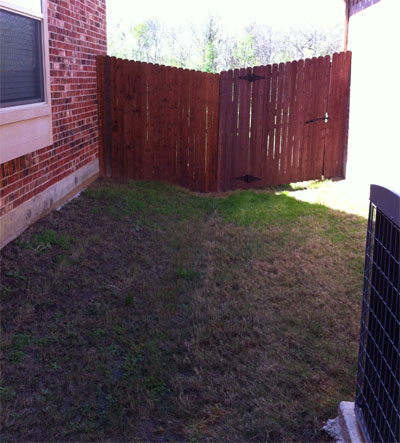
Answer: Without question, first choice would be mondograss (monkeygrass). Not the dwarf type, but regular mondograss. It holds soil like a claw, and it will thrive in the shady, moist environment. I’ve used thousands of them in my yard, almost all divided from other existing beds. This is a good time to do so.
Question: I have a 10- by 30-foot vegetable garden. I put a dozen Celebrity tomato plants from one end to the other in one row of wire cages on 2-foot spacings. Every year, spider mites wipe out my plants about the time I start harvesting. I’ve tried Kelthane (hoarded) and neem oil. Nothing has helped. Any suggestions? B.C., Fort Worth.
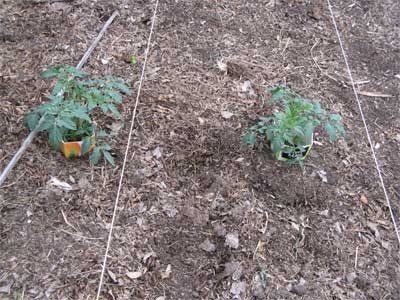
Answer: I hope so — let’s try. First, be certain it’s actually spider mites and not early blight. Both cause lower leaves to yellow. Early blight is fungal, and it causes yellow blotches the size of fingerprints. It usually shows up 2 or 3 weeks before spider mites move in. I have found that people often mistake it for spider mites. Mites cause very tiny tan mottling, and you can see the mites if you thump an affected leaf over a sheet of white paper. The tiny specks will start to move within just a few seconds. Hopefully, your Kelthane is still active. It’s been off the market for several years, and many of us really miss it. Last year was horrible for spider mites. Hopefully, 2012 may not be so bad. If it’s not too late, you might also try spacing the plants a little farther apart. That would keep the mites from getting started and moving down the row. Spacings of 36 or 42 inches might be better.
Question: We have these clumps of dark green grass showing up in our yard. They’re very distracting, since they’re more visible than the St. Augustine. What is it, and what can we do to control it? M.A., city not given.

Answer: This looks like ryegrass. Many of us use it to overseed established grass for a better appearance during the winter. It dies out as warm weather returns in late April and May. Still, it needs to be solid, not spotty like this. It also should not be used on St. Augustine in shady areas, since it is slow to die in the shade, and it retards the development of St. Augustine coming out of the winter. To your answer: there is nothing you can do to eliminate ryegrass in an existing lawn. However, come September, you have the opportunity to prevent it before the next generation ever germinates. Apply Dimension, Halts, Balan or other pre-emergent herbicide the first week of September. If you miss that timing, you’ll have to wait another entire year.
Question: I left the dried flowers on my Nikko hydrangeas over the winter. Should I have pruned them off? Will they have any impact on this year’s blooms? L.F., no city given.

Answer: It makes for a tidier landscape when they’re removed. I leave the old seed heads of my oakleaf hydrangeas in place long enough for birds to harvest the seeds. I trim them by mid-fall. They probably will have little or no impact on this year’s blooms. Trim them away now if you wish, but be careful not to nip off the new shoots and buds.
Question: I have rural acreage, and I was not able to get water to all of our 5-year-old trees last summer. This live oak is quite bare now, although one branch (see inset) has resprouted vigorously where I cut it back. There also are sprouts down around the bottom. Can this tree be saved? C., near Paris.
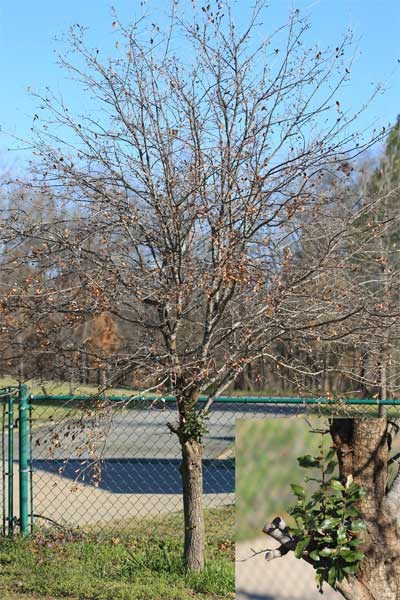
Answer: Coming out of last year, this is a very, very common sequence of questions this spring. You are not alone! It would appear that the tree is in the process of dying back to the spot where the new growth has emerged. I’m not so sure the trimming of that branch caused the resprouting. That’s just where the dieback happened. The basal sprouts are also the tree’s effort to regrow. Wait a few more weeks, then remove any and all dead wood. If in doubt, have a certified arborist come onsite to look at the tree personally. There obviously is still some portion of the root system in place. If you have to trim away most of the top growth, you might get strong regrowth as the tree attempts to reestablish itself. You’re going to have to make the call of whether the wait is worth it for you.
Question: We are in the process of moving to South Central Texas, but this lawn is at our home (still on the market) in DFW. What might be wrong with the St. Augustine, and should we replant St. Augustine or seed bermuda? J.L., DFW.
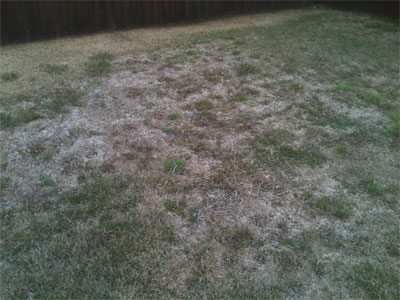
Answer: It’s difficult to know how to advise you, even to diagnose the problems. Whatever happened to the St. Augustine appears to have happened some time ago. It might simply have gotten too dry, or chinch bugs, which were rampant last year, may have been at work. Take All Root Rot is always a candidate. Here is a link to St. Augustine diagnostics information I have archived on my Facebook page. Hopefully, it will help you get to the bottom of the issues. That said, if there is much shade involved, better go back with more St. Augustine. If you’d prefer to switch over to bermuda, you’ll need to rototill the area, rake out the debris as you establish a smooth grade. Sow bermuda seed at 2 to 4 pounds per 1,000 square feet. Water lightly (5-8 minutes) daily for the first couple of weeks. Best time to plant in DFW: May. It’s still pretty early in North Texas.
Question: I’d like to try oakleaf hydrangeas in this bed. It’s fairly shady, and it seems to stay really moist most of the time. A local nursery told me that sodium in our water precludes their doing well here. Is that true? If so, what other plant shares their attributes and would be good in the bed? L.T., College Station.
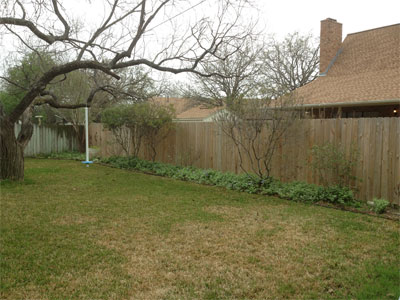
Answer: It would be easy enough to try one oakleaf hydrangea somewhere along your fence. That would let you monitor how well they hold up to the water. It would also let you know if you like their appearance. Remember that they’re deciduous, so you’ll be looking at stems over the winter. Note, too, that they really do best in fairly heavy shade, so don’t plant them out in a sunny spot. They grow to 6 feet tall and 6 to 7 feet wide, so they would seem to be rather large for this space in your landscape. If you want to stick to the width of the bed as you have it, dwarf Burford holly would be one of the best options. Nandinas, especially compact nandina would be attractive, and you could also erect a wire or wooden trellis and grow Carolina jessamine, crossvine or other shade-tolerant spring bloomer on it.
Question: We need to put something alongside our air conditioner to shade its panels. What can we use that stays fairly vertical? C.H., no city given.
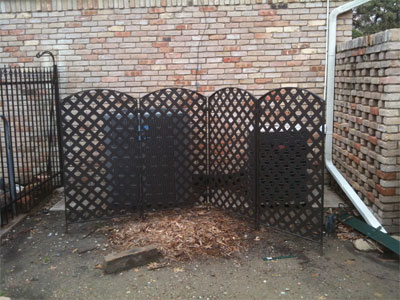
Answer: Your panels could work, although you would need to anchor them in a tidy, straight row. Using 4×4 posts would be best. For the record, with three different patterns of fencing showing up in the same area, I wonder if it might look better with a vertical wooden fence such as green-washed, pressure-treated pine in a simple picket arrangement, with maybe 1-1/2 to 2 inches between 4-inch pickets. I had a similar configuration in a landscape at another home, and I covered my fence with Boston ivy. It clung and did well at covering the fence. Once a year, I had to trim it away from the units, but that was an easy task.
Question: We have several Italian cypress trees that were hit by bagworms last summer. We caught them fairly early, but this one tree was hit the hardest. Can it be saved, or should we take it out? Can it be trimmed? The lower foliage is growing well. D.S., Northwest of Fort Worth.
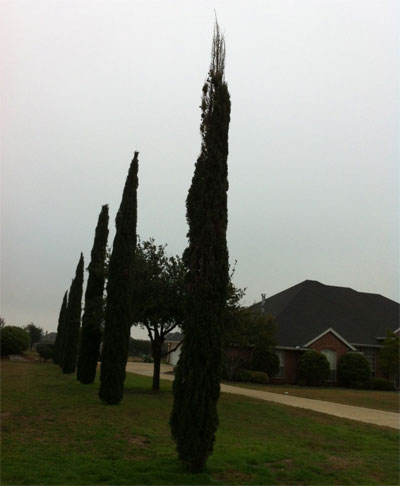
Answer: Trimming out the dead tip of this plant should allow it to regrow just fine. It doesn’t look like that would have any significant impact on its match in size with the other plants, but if it does, you could easily enough trim them gently, too. Of course, trimming at that height may necessitate stilts or a helicopter.

